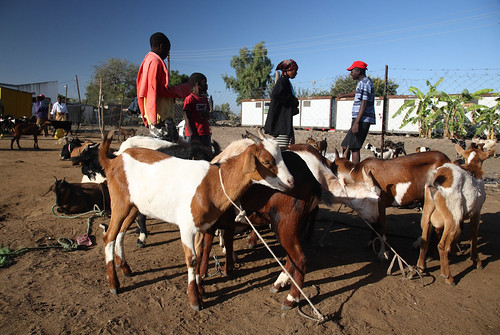‘Participatory epidemiology’ – an approach to controlling livestock diseases pioneered by ILRI’s Jeff Mariner and colleague Christine Jost – is being used to improve control of bird flu in Indonesia.
Indonesia has the worst bird flu problem in the world. Experts fear that the country provides the perfect setting for the highly pathogenic form of avian influenza, H5N1, to evolve into a form easily passed among humans, touching off a global pandemic. Through an approach known as ‘participatory epidemiology’, teams of veterinarians are tapping into local knowledge of where and when bird flu outbreaks are occurring and then enlisting villagers’ cooperation in control efforts.
The H5N1 virus is endemic among poultry throughout much of Indonesia. ‘You simply couldn’t get more virus in the environment,’ says Jeffrey Mariner, a veterinarian at the International Livestock Research Institute (ILRI), in Nairobi, who is helping train surveillance teams under the auspices of the Food and Agriculture Organization (FAO) of the United Nations.
To establish a systematic control program, officials will have to track where and when outbreaks of bird flu are occurring, especially among the estimated 300 million chickens kept in backyards by 60% of all Indonesian households. That’s the challenge for a new approach called ‘participatory epidemiology’ pioneered by Jeff Mariner and his colleague Christine Jost, an assistant professor at Tufts University, in Massachusetts. By talking to villagers and about disease incidences and symptoms, researchers can gather valuable epidemiological data on how disease is spreading and kept in circulation, which in turn informs control strategies. Mariner and Jost pioneered participatory epidemiology to help control rinderpest in Africa. This approach enabled authorities in Sudan to target vaccination programs that eradicated rinderpest from the country. Although participatory approach has never been tried for avian influenza and has never been tried on such a large scale for any disease, international and Indonesian animal health officials believe that this approach will be a key component for bringing the H5N1 crisis under control, both in Indonesia and elsewhere in the developing world.
Early in 2006, with USD1.5 million in funding from the United States Agency for International Development (USAID), a pilot program was established in 12 districts in Java comprising two teams of publicly funded vets specializing in either participatory disease surveillance or participatory disease response. The teams ‘turned up much more avian influenza than anyone expected,’ Mariner says. ‘Poultry populations were fully saturated with the disease.’
Those alarming results persuaded Indonesian authorities and international experts to push for a rapid expansion of participatory epidemiology. Even though coverage of the country is still fairly limited, the data being accumulated are providing clues to what keeps the virus in circulation.
Participatory response is an important part of the program. Mariner says that until recently the standard response was for government vets to indiscriminately cull all poultry around the villages where infected birds were found and then vaccinate widely. This mass culling, known as ‘stamping out’, causes resentment among smallholders, who may correctly believe that their birds have not been exposed to the virus. Delays in compensation exacerbate the ill feelings. The participatory approach aims to involve villagers in decisions—ideally, to cull all poultry directly exposed to infected birds, with immediate compensation, and then vaccinate other birds in the vicinity. Mariner says that even smallholders can be convinced of the need to cull birds that have been directly exposed to H5N1-infected chickens.
At the same time that Indonesia is verifying the effectiveness of participatory epidemiology, the country, with FAO support and financing from the United States, Australia and Japan, is planning to extend the program to all of Java and Bali and parts of Sumatra by next May.
This article was taken from a longer article published in Science on 5 January 2007 titled: Indonesia Taps Village Wisdom to Fight Bird Flu.
Download article (subscription required): http://www.sciencemag.org/cgi/content/full/315/5808/30

